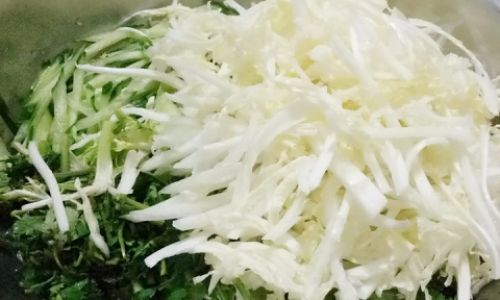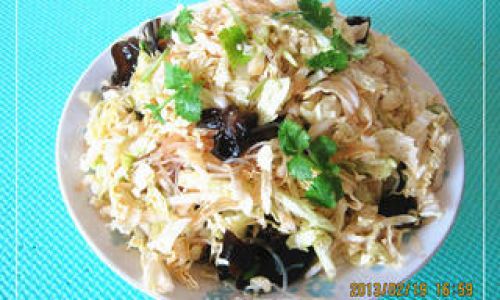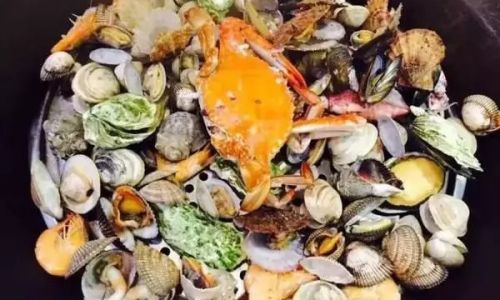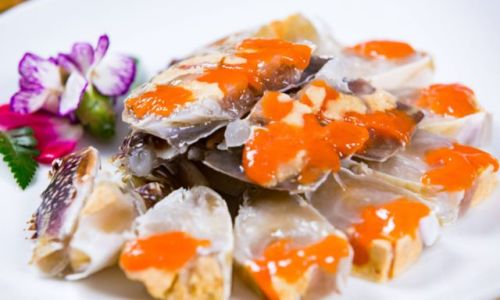Table of content
Chinese cabbage, known as Bai Cai in Mandarin, is a staple ingredient in Asian cuisine, prized for its crisp texture, mild flavor, and versatility. Among the countless ways to prepare this humble vegetable, the cold salad—or liang ban (凉拌)—stands out as a beloved dish, especially during warmer months. This refreshing dish combines the natural sweetness of cabbage with a tangy, savory dressing, creating a harmonious blend of flavors and textures. Whether served as a side dish, appetizer, or light meal, homemade Chinese cabbage salad is a testament to the beauty of simplicity in cooking. In this guide, we will explore the step-by-step process of crafting this dish, from selecting the freshest ingredients to mastering the perfect balance of seasonings.
The Allure of Chinese Cabbage Salad
Chinese cabbage salad, often referred to as liang ban bai cai, is more than just a salad—it is a celebration of freshness and culinary tradition. Unlike Western cabbage salads, which often feature heavy dressings or mayonnaise, this dish relies on a light yet flavorful mixture of vinegar, soy sauce, garlic, and aromatic oils. The result is a bright, crisp salad that awakens the palate without weighing it down.

The dish’s popularity stems from its adaptability. It can be customized to suit dietary preferences, from vegan to gluten-free, and pairs wonderfully with grilled meats, noodles, or rice. Its minimal cooking time also makes it ideal for busy individuals seeking a wholesome meal without spending hours in the kitchen.
Selecting the Perfect Cabbage
The foundation of any great cabbage salad is, of course, the cabbage itself. Chinese cabbage, also called Napa cabbage, is characterized by its elongated shape, pale green leaves, and crisp, tender stems. When selecting cabbage, look for heads that feel firm and heavy for their size, with leaves that are vibrant and free from blemishes. Avoid cabbages with wilted outer leaves or a strong, sulfurous odor, as these may indicate spoilage.
For optimal flavor and texture, choose cabbages with tightly packed leaves. Looser heads may be older and less crisp. If possible, opt for organic or locally grown cabbage, as it tends to be fresher and more flavorful.
Essential Ingredients and Tools
Creating the perfect Chinese cabbage salad requires minimal ingredients, but each plays a crucial role in elevating the dish. Here’s a breakdown of the key components:
For the Salad Base
- 1 medium head of Chinese cabbage (approx. 1.5–2 lbs)
- 1–2 carrots (for color and crunch)
- Optional additions: cucumber, red bell pepper, or thinly sliced radishes
For the Dressing
- 3–4 tablespoons rice vinegar (or apple cider vinegar for a milder tang)
- 1–2 tablespoons soy sauce (use tamari for gluten-free)
- 1–2 teaspoons sesame oil (toasted sesame oil adds depth)
- 1 teaspoon sugar (or a pinch of stevia for a sugar-free version)
- 1–2 garlic cloves, minced
- 1–2 teaspoons fresh ginger, grated (optional)
- 1–2 red chili peppers, thinly sliced (adjust to taste)
- 1 tablespoon toasted sesame seeds (for garnish)
- 1–2 tablespoons neutral oil (such as vegetable or canola oil)
- Salt and white pepper (to taste)
Tools
- Sharp chef’s knife (for slicing cabbage and vegetables)
- Large mixing bowl
- Cutting board
- Small saucepan (for toasting sesame seeds, if needed)
- Tongs or salad hands (for tossing)
Step-by-Step Preparation
Preparing the Cabbage
- Wash and dry: Rinse the cabbage under cold water, gently separating the leaves to remove any dirt. Pat dry with a clean kitchen towel or salad spinner.
- Core and slice: Remove the core by cutting the cabbage head in half lengthwise, then slicing diagonally to remove the tough base. Stack the cabbage halves and slice them crosswise into thin shreds (about ¼-inch thick). For added texture, you can also slice the cabbage into ribbons using a mandoline.
Preparing the Vegetables
- Carrots: Peel and julienne or grate them into thin matchsticks.
- Cucumber: If using, slice into thin half-moons or matchsticks.
- Red bell pepper: Remove the seeds and slice into thin strips.
Blanching (Optional)
While Chinese cabbage is often enjoyed raw, blanching can soften its texture and mellow its flavor. To blanch:
- Bring a large pot of salted water to a boil.
- Add the cabbage shreds and cook for 30–60 seconds, until slightly wilted.
- Immediately transfer to an ice bath to halt cooking.
- Drain thoroughly and pat dry.
Making the Dressing
The dressing is the soul of the salad. Here’s how to achieve balance:
- Whisk together: In a small bowl, combine the rice vinegar, soy sauce, sesame oil, sugar, minced garlic, grated ginger (if using), and chili slices.
- Emulsify: Gradually whisk in the neutral oil until the dressing thickens slightly.
- Taste and adjust: Add salt, pepper, or additional vinegar/soy sauce to taste. For a spicier kick, increase the chili; for sweetness, add a touch more sugar.
Assembling the Salad
- Combine vegetables: In a large mixing bowl, toss the cabbage, carrots, and any optional vegetables until evenly distributed.
- Dress the salad: Pour the dressing over the vegetables and toss gently with tongs, ensuring every strand is coated.
- Marinate: Let the salad sit for 10–15 minutes to allow the flavors to meld. This step also softens the cabbage slightly.
- Garnish: Sprinkle with toasted sesame seeds and a final drizzle of sesame oil before serving.
Expert Tips for Perfect Results
- Drain thoroughly: Excess moisture can dilute the dressing. After washing the cabbage, pat it dry with paper towels or use a salad spinner.
- Adjust textures: For extra crunch, add a handful of crushed peanuts or chopped cilantro.
- Make ahead: The salad tastes best when made a few hours in advance, allowing the flavors to develop. Store it in an airtight container in the refrigerator.
- Customize the heat: Replace red chili peppers with a pinch of red pepper flakes or a dash of Sriracha for a milder spice.
- Vegan variation: Substitute soy sauce with tamari and ensure the sesame oil is vegan-friendly.
Health Benefits of Chinese Cabbage Salad
Chinese cabbage is a nutritional powerhouse, rich in vitamins C and K, fiber, and antioxidants. Its high water content makes it hydrating, while the crunchy texture aids digestion. The dressing’s ingredients—garlic, ginger, and sesame oil—offer additional health benefits, such as anti-inflammatory properties and heart-healthy fats.
Serving Suggestions
- As a side dish: Pair with stir-fried noodles, dumplings, or grilled meats.
- As a light meal: Top with shredded chicken, tofu, or boiled eggs for added protein.
- In wraps: Use the salad as a filling for rice paper rolls or lettuce wraps.
- At picnics: Its portability and lack of mayonnaise make it ideal for outdoor gatherings.
Variations to Explore
The beauty of Chinese cabbage salad lies in its adaptability. Here are a few creative twists:

Korean-Inspired Version
Add gochugaru (Korean chili flakes), a drizzle of gochujang (fermented chili paste), and a sprinkle of kimchi for a spicy, tangy kick.
Sesame-Orange Delight
Replace rice vinegar with fresh orange juice and add a teaspoon of orange zest. Top with toasted sesame seeds and a handful of mandarin segments.
Herbaceous Twist
Incorporate fresh herbs like mint, basil, or cilantro. Toss in sliced scallions or shredded purple cabbage for a pop of color.
Mushroom Medley
Sauté shiitake or enoki mushrooms in garlic and soy sauce, then fold them into the salad for an umami-rich layer.
Troubleshooting Common Issues
- Soggy cabbage: Ensure the cabbage is thoroughly dried after washing. If blanching, avoid overcooking.
- Bland flavor: Increase the garlic, ginger, or chili. Let the salad marinate longer.
- Overpowering vinegar: Balance with a touch more sugar or oil.
- Too spicy: Tone down the heat with a squeeze of lime or a sprinkle of sugar.
The Cultural Significance of Liang Ban Dishes
In Chinese cuisine, liang ban dishes are more than just salads—they are symbols of seasonal eating and culinary ingenuity. Historically, these dishes were a way to preserve vegetables during hot summers before refrigeration. Today, they remain a staple of home-cooked meals, embodying the philosophy of using fresh, local ingredients to create simple yet satisfying dishes.
Conclusion
Chinese cabbage salad is a testament to the idea that the simplest dishes can be the most profound. With its crisp texture, vibrant flavors, and endless adaptability, it is a dish that transcends cultural boundaries and dietary preferences. Whether you’re a seasoned cook or a novice in the kitchen, mastering this recipe will reward you with a versatile, healthy, and delicious addition to your culinary repertoire. So grab a head of cabbage, a bottle of vinegar, and let the art of liang ban begin!





0 comments